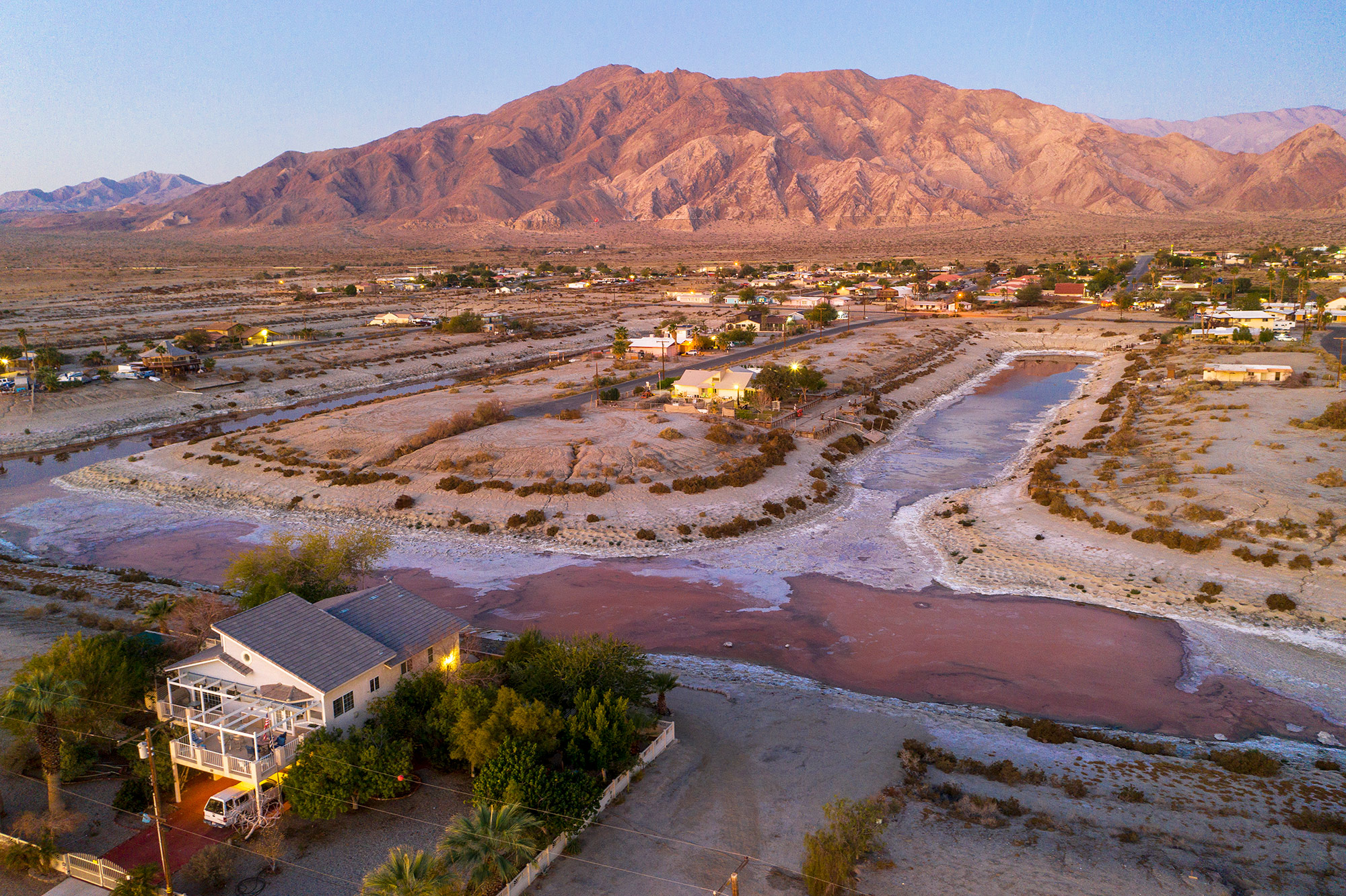Hello everyone, and welcome to the latest issue of Parched. Zoya Teirstein here, to tell you a story about a former desert oasis, now toxic wasteland: the Salton Sea.
In the spring of 1905, the Colorado River, bursting with seasonal rain, topped an irrigation canal and flooded the site of a dried lake bed in Southern California. The flooding, which continued for two years before engineers sealed up the busted channel, created the Salton Sea, an unexpected gem in the middle of the arid California landscape. In the decades that followed, celebrities, vacationers, and speed boat enthusiasts flocked to the body of water. It seemed like the Salton Sea, and the vibrant communities that had sprung up around it, would be there for centuries to come.
But the sea’s heyday was short-lived. Cut off from the source that created it — the Colorado River — and sustained mainly by agricultural runoff from nearby farms, the landlocked waterbody began to evaporate. The water that remained became increasingly salty and toxic. The rich, white vacationers fled, replaced by a community predominantly made up of Latino agricultural workers who labor in nearby fields in Imperial County and Indigenous tribes that have called the region home for millennia.
The Salton Sea is fed by about 50 agricultural channels, carrying water infused with pesticides, fertilizers, and other agricultural byproducts. As a result, the briny lake’s sediment is laced with toxins like lead, chromium, and DDT. Climate change and the prolonged megadrought gripping the Western United States are only compounding these problems. As the sea dries and more shoreline is exposed, the strong winds that plague this part of California kick up chemical-laced dust and blow it into nearby communities, where roughly 650,000 people live. Residents complain of headaches, nosebleeds, asthma, and other health problems.
Today at Grist, I published a story that looks at this growing public health threat, and why communities nearby are demanding solutions.

An overhead view of marinas that have become landlocked as the Salton Sea evaporates. David McNew / Getty Images
“It’s a huge environmental justice issue,” said Jenny Binstock, a senior campaign representative at the Sierra Club, of the dust blowing off the rapidly drying lake. “It leads to increased asthma attacks, bronchitis, lung disease.” Hospitalization rates for children with asthma in facilities near the sea are nearly double the state average.
Beyond dust, Ryan Sinclair, an environmental microbiologist at the Loma Linda University School of Public Health in California, is concerned about bioaerosols — tiny airborne particles that come from plants and animals — that can develop in the sea’s shallow, tepid waters.
“Algae produce algal toxins and bacteria can produce endotoxins,” he said, “and both of those can aerosolize and blow into nearby communities.” When researchers exposed mice to aerosolized Salton Sea water, the mice developed a “unique type of asthma,” Sinclair noted. But solutions are limited. The dust that gets kicked up can be suppressed, to some extent, with habitat restoration projects. The Salton Sea’s first-ever large-scale restoration project, a network of ponds on 30,000 acres of lake bed, is proposed to start this year. But the community says the project is no substitute for the obvious: The sea is rapidly shrinking and it needs an infusion of fresh water to survive.
To read the full story and learn more about the solutions being considered, click here.
What we’re reading:
California drought pits farmers vs. cities. But neither is the biggest water victim
Hayley Smith, Los Angeles Times
◆ Read more
California is expected to enter a fourth straight year of drought
Soumya Karlamangla, New York Times
◆ Read more
Federal officials set their sights on Lower Colorado River evaporation to speed up conservation
Luke Runyon, KUNC
◆ Read more
Drought in U.S. West leads farmers to look elsewhere for revenue
Dan Frosch, Wall Street Journal
◆ Read more
Climate change disrupts Moroccan nomads’ lifestyle
Souad Anouar, Morocco World News
◆ Read more
Wild blueberry harvest in Maine suffered in this year’s drought
Joyce Kryszak, The Maine Monitor
◆ Read more



